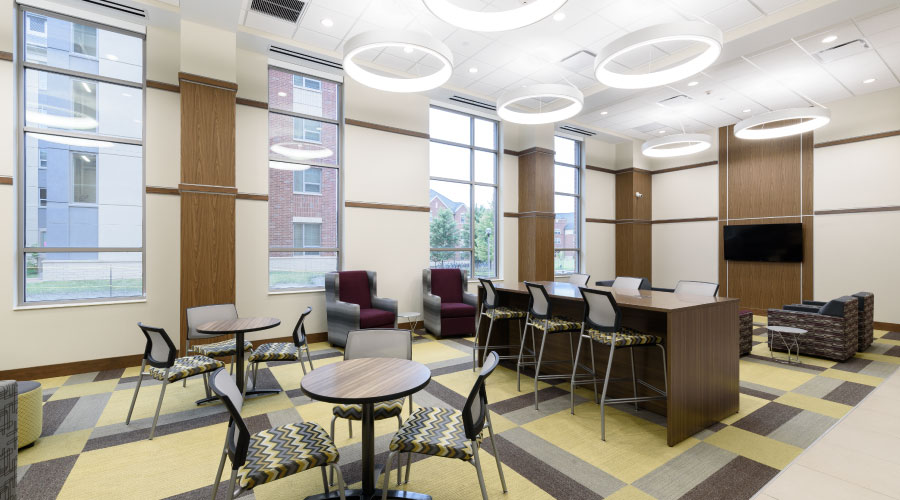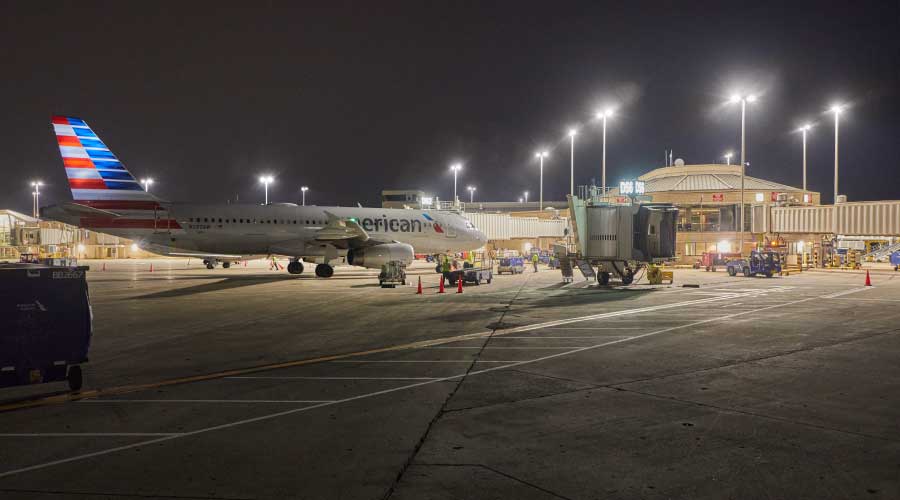Energy Efficiency Drives LED Decisions
Energy efficiency remains the primary reason facility managers have begun specifying these systems. A full picture of LED efficiency, however, requires an examination of how efficiency is reported and how the light is used, says Ira Krepchin, director of research for E Source. Energy efficiency of light sources typically is measured in lumens per watt (lm/W), which signifies the amount of light produced for each watt of electricity consumed. This is called lumen efficacy.
For fluorescent and HID sources, the light source's overall efficiency is reduced by the efficiency of the fixture. "Light is either scattered in an undesirable direction or absorbed by a less-than-perfect reflector," Krepchin says. The bottom line for facility managers is that luminaire efficacy can be significantly lower than the light source in isolation.
The directional nature of LEDs makes most LED fixtures very efficient, Krepchin says. But LEDs are generally driven by a current-regulated DC power supply called a driver, which ensures stable operation. The driver reduces the efficiency of the entire LED system — sometimes significantly, Krepchin says. So it's important to pay attention to the efficiency of drivers when specifying a system.
Facility professionals need to account for all inefficiencies when comparing LEDs to other light sources. "This whole-system efficacy (source/driver/fixture) provides a better picture of overall energy efficiency than examining the LED source in isolation," he says. "On that basis, LEDs are far more efficient than incandescent lamps and equal to, or better than, compact fluorescent lamps, especially in recessed can downlights where the directionality of LED light is an asset."
Compared to linear florescent lamps, industry sources say, LED recessed fixtures (troffers) recently have reached the point where their efficacy compares with that of fluorescent fixtures, although LED T8 replacement tubes are generally not as effective.
DOE has done numerous studies on the lumen efficacy of LED lighting. Its long-term research and development goal calls for white-light LEDs producing 160 lm/W in "cost-effective, market-ready systems" by 2025. Currently available LED drivers, according to DOE, are about 85 percent efficient, meaning LED source efficacy should be discounted by 15 percent to account for the driver.
Lighting Controls And LEDs
With an increasing focus on efficiency through lighting controls, many facility professionals are asking themselves if LED lighting can be controlled in the same manner as conventional lamps and fixtures.
The answer is "yes," says Ted Brickenden, director of sales operations for Cooper Lighting. "LEDs work well with lighting controls, and some can be dimmed," he says. "The instant-on nature of LEDs makes them particularly suitable for interior and exterior applications incorporating energy-saving strategies."
According to Steve Briggs, general manager for LED systems at GE Lighting, LEDs are "very robust to switching," which makes them ideal for applications using occupancy sensors, time-based switching or switched daylight harvesting, which involves turning off half of the lights when a certain ambient light level is detected. "The LED driver technology determines the quality of control performance," Briggs says. "More and more LED systems are using driver technologies that are compatible with existing dimming control solutions. For many applications, you now can find an LED and control solution that are compatible and meet your dimming requirements."
Challenges and Solutions
However, that's not to say there aren't some challenges with dimming controls, says Jim Young, vice president of sales and marketing for WattStopper. "Unfortunately, standards do not currently accommodate phase-cut dimming of energy saving lamps like CFLs and LEDs, and lamp manufacturers have not standardized on a technology to control them," he says. That has led to performance issues like flickering, non-ignition, shorter life time, and audible noise. "On a positive note," says Young, "there are many viable solutions in the marketplace today."
Some of these solutions include LED drivers that can be controlled using 0-10V dimmers or dedicated LED dimmers. Also, more lamp and control manufacturers have begun to publish lamp-dimmer compatibility lists until the industry can deliver a standard for LED lamps and dimmers.
Despite these hurdles, lighting experts agree that at the rate LED technology is evolving, facility managers can anticipate seeing increasing flexibility in terms of desired control functions, particularly with respect to advanced control strategies.
"The inherent compatibility of LEDs with digital lighting controls may ultimately hold the greatest potential for economic benefit," says Dave Ranieri, vice president and general manager, indoor, for Acuity Brands. "LEDs are digital light engines that can interface directly to on-board luminaire control logic. The result is an 'intelligent' luminaire that has the ability to monitor and respond to its environment and perform programmed tasks to further conserve input power and reduce luminaire maintenance." |
Related Topics:















